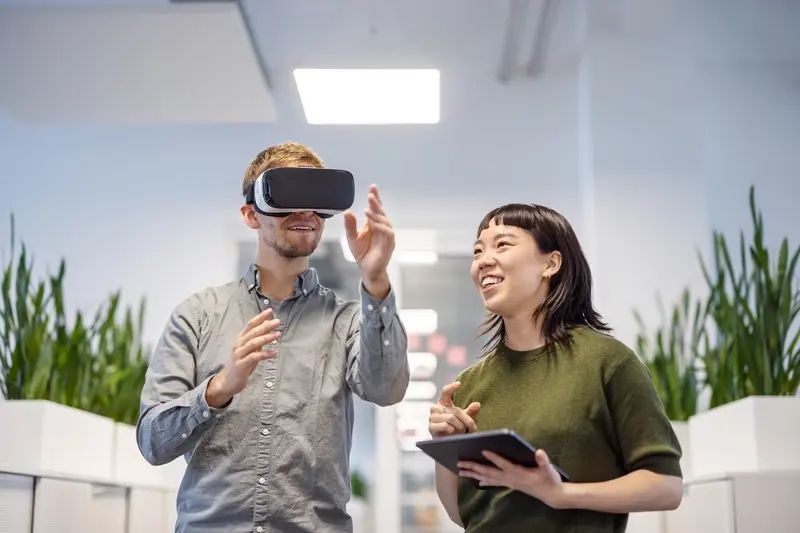What's The Difference Between iPhone And Android Apps?
Over 6 billion people worldwide use mobile phones, but they're split almost evenly between two completely different systems. Half are using iPhones running iOS, whilst the other half are on Android devices—and these aren't just different brands, they're entirely different approaches to mobile technology.
When I first started building apps, this divide seemed like a minor technical detail. Boy, was I wrong! The differences between iOS vs Android apps run much deeper than most people realise. We're talking about different programming languages, different design rules, different ways of handling security, and even different philosophies about how people should interact with their phones.
The choice between iPhone and Android isn't just about hardware—it's about choosing between two fundamentally different digital ecosystems
This mobile platform comparison matters more than you might think. If you're planning to build an app, understanding iPhone Android app differences could save you thousands of pounds and months of development time. Whether you're a business owner, a budding entrepreneur, or just curious about the technology in your pocket, knowing these differences will help you make smarter decisions about mobile apps.
The Big Picture: Two Different Worlds
Right, let's get straight to the point—iPhone and Android apps live in completely different ecosystems. Think of it like this: iPhones run iOS (made by Apple) and Android phones run Android (made by Google). These are two separate operating systems that work in their own unique ways.
Now here's where it gets interesting from a developer's perspective. Apple controls everything about their system—the hardware, the software, the app store, the lot. They decide what goes and what doesn't. Android? Well, that's a different story altogether. Google makes the Android system but then lets loads of different companies like Samsung, LG, and Huawei put it on their phones.
Key Differences at a Glance
- Apple makes both the phone and the software that runs on it
- Android software runs on hundreds of different phone models
- iPhone users typically update to new versions faster
- Android gives users more customisation options
- Apps need to be built differently for each system
What this means for app development is quite significant—you can't just build one app and expect it to work on both systems. The programming languages are different, the design rules are different, and even how users interact with apps varies between the two platforms.
How They Look and Feel
The visual differences between iOS vs Android apps are pretty dramatic when you know what to look for. iPhone apps follow Apple's strict design guidelines—everything needs to feel clean, minimal, and perfectly aligned. You'll notice buttons are usually rounded rectangles, text is crisp and readable, and there's lots of white space. Apple is quite controlling about how things should look, which means most iPhone apps have a consistent feel to them.
Android apps are more flexible in their approach. Google gives developers much more freedom to experiment with colours, shapes, and layouts. This means you'll see more variety in how Android apps look—some are bold and colourful, others might use unusual button shapes or creative navigation patterns. The trade-off? Sometimes this freedom leads to apps that feel less polished or harder to use.
Navigation Patterns
iPhone apps typically use a tab bar at the bottom of the screen for main navigation. Android apps often prefer a hamburger menu (those three horizontal lines) or material design patterns with floating action buttons. These mobile platform comparison differences might seem small, but they significantly impact how users interact with your app.
When designing for both platforms, don't just copy and paste your design. Each platform has user expectations that have been built up over years of use—respect them or risk confusing your users.
Building Apps: Different Tools, Different Rules
When it comes to actually building iPhone and Android apps, developers need completely different toolkits—and that's where things get interesting. Apple forces developers to use their own programming language called Swift (or the older Objective-C) and their development environment called Xcode. You can only run Xcode on a Mac computer, which means if you want to build iPhone apps, you're buying Apple hardware whether you like it or not!
Android developers have much more freedom. They can use Java, Kotlin, or even other languages, and Google's Android Studio runs on Windows, Mac, or Linux computers. This flexibility is brilliant for developers who don't want to be locked into one company's ecosystem.
The Tools Developers Use
- iPhone apps: Swift or Objective-C languages, Xcode on Mac only
- Android apps: Java or Kotlin languages, Android Studio on any computer
- Cross-platform tools: React Native, Flutter, Xamarin work for both
Here's something most people don't realise—building for both platforms means learning two different rule books. Apple has strict guidelines about how apps should look and behave, whilst Android gives developers more creative freedom. That's why you'll often see apps that look quite different between the two platforms, even though they do the same job.
Speed and Performance Differences
When it comes to speed and performance, iPhone and Android apps can feel quite different—and there's some solid science behind why. iPhones typically have fewer hardware variations to worry about; Apple controls both the phone and the software, which means developers can optimise their apps for a smaller range of devices. Android apps, on the other hand, need to work across hundreds of different phones with varying processors, memory, and screen sizes.
Why iPhones Often Feel Snappier
I've noticed that iPhone apps often launch faster and animations tend to be smoother. This isn't necessarily because iPhones are more powerful—though Apple's chips are genuinely impressive—but because iOS manages memory and background processes differently. The system is quite aggressive about keeping apps running smoothly by limiting what other apps can do in the background.
The best-performing app is the one that users don't have to think about—it just works when they need it to
Android's Flexibility Challenge
Android gives apps more freedom to multitask and run background processes, which can be brilliant for functionality but sometimes affects performance. A £200 Android phone won't perform like a £1000 iPhone, but a high-end Android device can absolutely match or exceed iPhone performance. The key difference is consistency—you know what you're getting with an iPhone, whilst Android performance varies significantly depending on the device.
Getting Your App to Users
Once you've built your app, you need to get it into people's hands—and this is where iPhone and Android take completely different paths. For iPhone apps, there's only one destination: the App Store. Apple controls everything here, from the review process to how your app gets discovered. They check every single app before it goes live, which can take anywhere from a day to a week.
Android gives you more options but makes things a bit more complicated. Most people get Android apps from Google Play Store, but you can also distribute through Amazon Appstore, Samsung Galaxy Store, or even let people download directly from your website. Google's review process is usually faster than Apple's, often taking just a few hours.
The Review Process
Apple's reviewers are quite strict—they'll reject apps for design issues, content problems, or if something doesn't work properly. Google is more relaxed but still checks for malware and policy violations. Both stores have their own rules about what's allowed and what isn't.
Getting Found
Both app stores use algorithms to decide which apps people see when they search. The key factors include:
- App name and description keywords
- Number of downloads
- User ratings and reviews
- How often people use your app after downloading
The good news? Once you understand each platform's rules, getting your app out there becomes much more straightforward.
Making Money from Your App
Here's where iOS vs Android apps start showing some really interesting differences—and I'm not just talking about pocket change here. The way people spend money on iPhone and Android apps is quite different, which affects how you might want to approach your monetisation strategy.
iPhone users tend to spend more money on apps. They're more likely to pay upfront for a premium app and they generally have higher spending power. Android users, on the other hand, prefer free apps but they're happy to watch adverts or make small purchases within the app itself. This means if you're targeting iPhone users, you might have better luck with paid apps or subscription models. For Android, think free apps with adverts or in-app purchases.
Platform-Specific Payment Preferences
The payment systems work differently too. Apple's App Store takes a 30% cut of everything, but their payment process is seamless—users often have their payment details saved and buying is just a tap away. Google Play also takes 30%, but Android users can sometimes install apps from other stores, giving you more options for distribution.
Start with the platform where your target audience is most likely to pay. If you're targeting business professionals or creative types, iPhone might be your best bet. For gaming or utility apps with broad appeal, Android's larger user base could work better.
Conclusion
So there you have it—the main differences between iPhone and Android apps laid out clearly. After years of working with both platforms, I can tell you that neither is inherently better than the other; they're just different tools for different jobs. iPhone apps tend to feel more polished and consistent, whilst Android apps offer more flexibility and customisation options. The development process varies quite a bit too, with different programming languages, design guidelines, and approval processes to navigate.
What really matters is understanding your audience and what they need. If you're targeting business professionals who value seamless experiences, iPhone might be your focus. If you want to reach the widest possible audience with varied preferences, Android could be the way to go. Many successful apps end up on both platforms anyway—it's just a question of which one you start with.
The performance differences have narrowed over the years, and both app stores offer solid ways to reach users and generate revenue. At the end of the day, a great app idea executed well will find success on either platform. The technical differences matter, but they shouldn't overshadow the most important thing: building something people actually want to use.
Share this
Subscribe To Our Learning Centre
You May Also Like
These Related Guides

What Are the Biggest Limitations of Progressive Web Apps?

What Are the Essential Integrations Every Startup App Should Consider?



